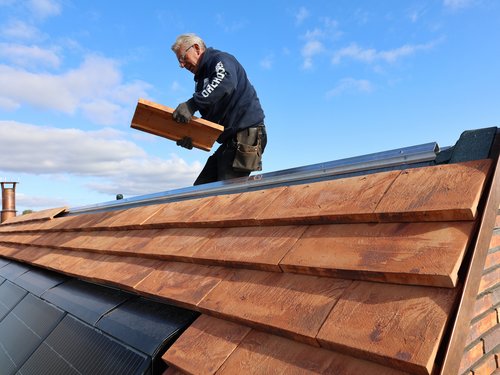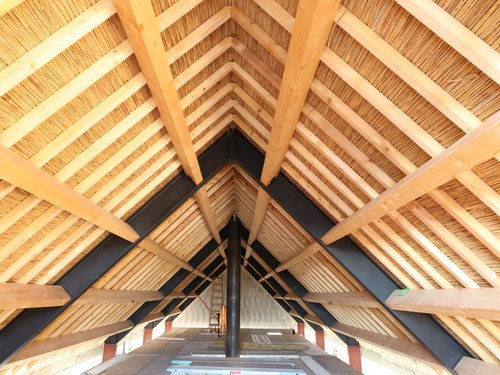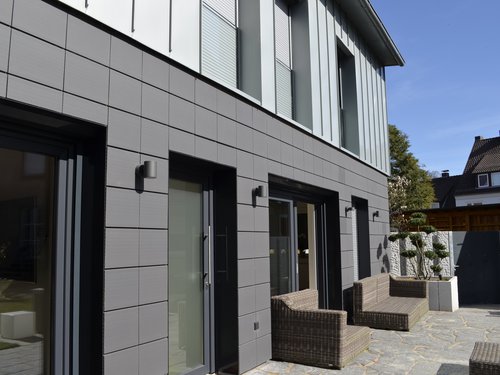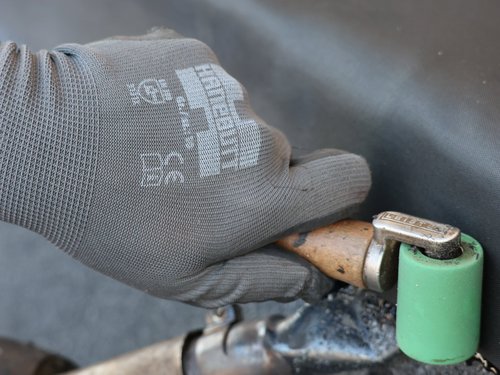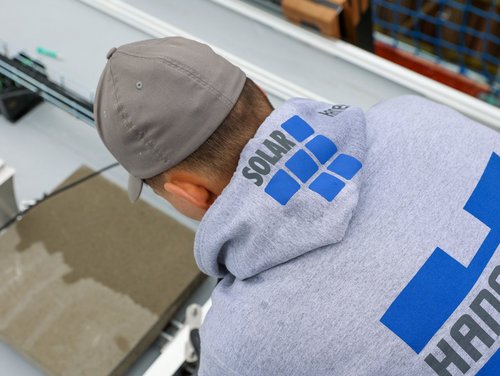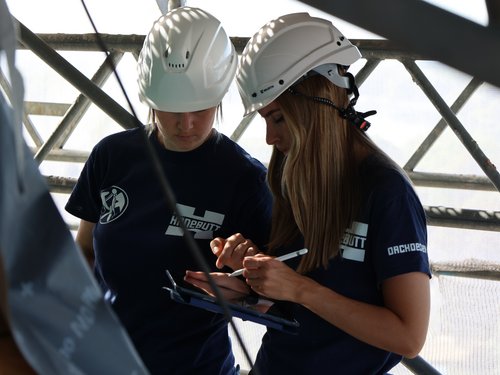All tight.
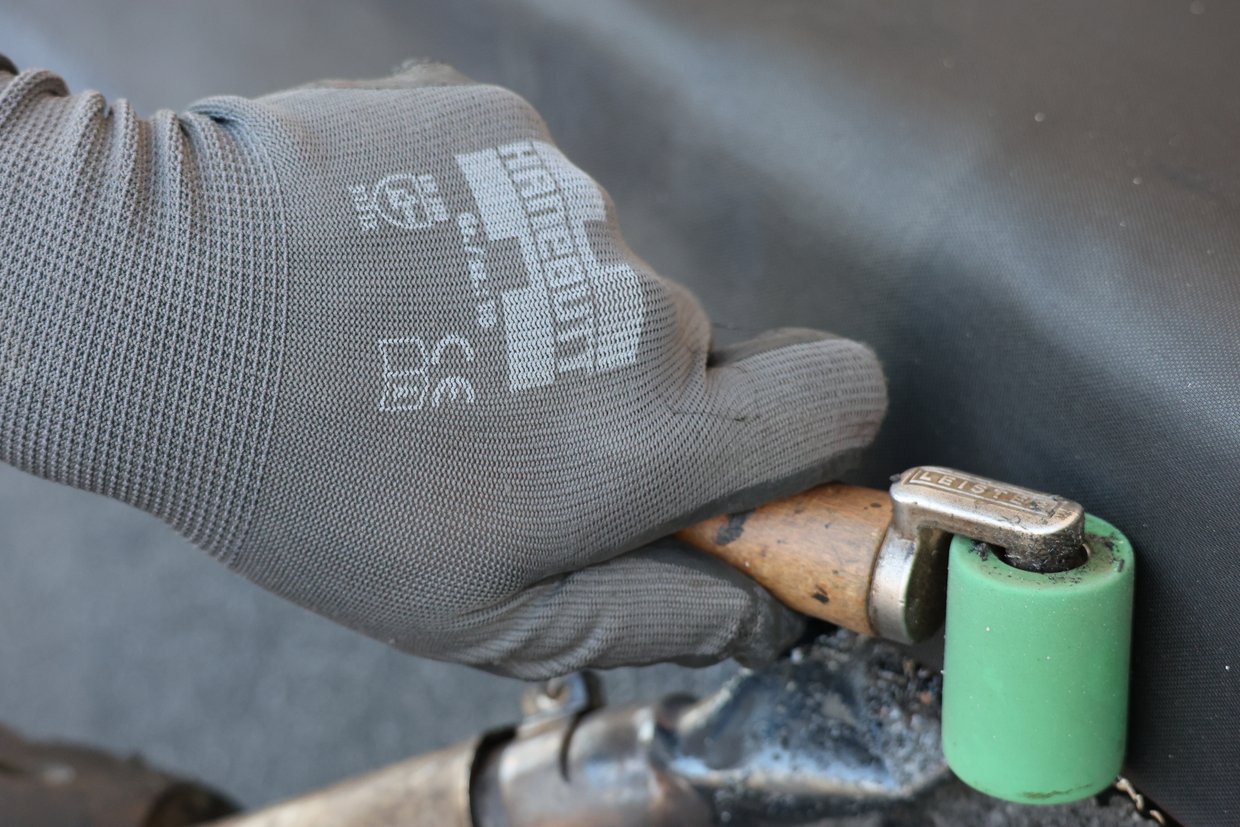
Water can cause considerable damage to various parts of a building if it is not drained away properly.
Precipitation, seepage water and soil moisture are persistent enemies of a building structure. Our knowledge and expertise in this area is so extensive that we decided to set up our own company within the Hanebutt Group and work exclusively with experts who can solve your problems.
Hanebutt Bauwerksabdichtung GmbH are the superheroes against the forces of nature.
How can we support you?
What is structural waterproofing?
The basic principle of structural waterproofing is to prevent water damage to the building fabric. Such waterproofing can look different. However, they are particularly important in the renovation and new construction of basements, underground floors, bridges and tunnels, as well as on roofs and chimneys, for example.
To summarise: The more water can penetrate somewhere or where parts of the building are exposed to high levels of moisture, the more structural waterproofing is required.
As a rule, structural waterproofing is carried out by bricklayers, reinforced concrete constructors, timber and building preservation specialists, structural waterproofers or, as is the case at Hanebutt, roofers.
As the active use of basements is becoming increasingly popular, the demands on the finishing and therefore also the waterproofing in new builds and renovations have also increased.
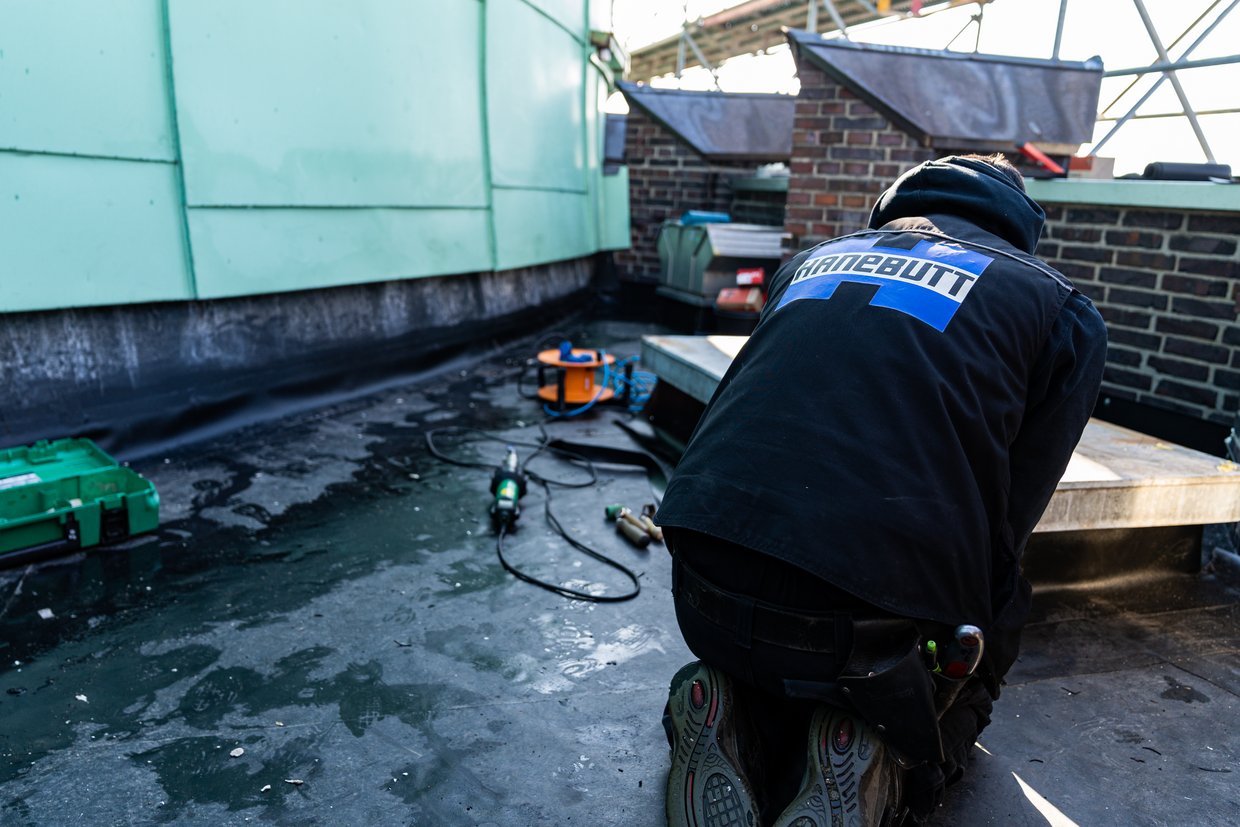
Safety aspect of structural waterproofing

Are you planning a construction project and want to guarantee its durability? Then the correct and professional execution, as we do at Hanebutt, is essential, because professional and high-quality structural waterproofing is essential for the protection of your building and yourself.
The safety and service life of a building go hand in hand with the question of how watertight a building is. Waterproofing is particularly essential for underground storeys, where water must not be allowed to penetrate, but containers or drip pans from which liquid should not escape should not be neglected either.
Basically, tight and dry walls, guaranteed by good waterproofing, are crucial for keeping a building intact.
So if you are thinking about refurbishment or a new build and have unanswered questions or special concerns, Hanebutt is your point of contact. Feel free to contact us at any time and get the information you need.
Materials for waterproofing buildings
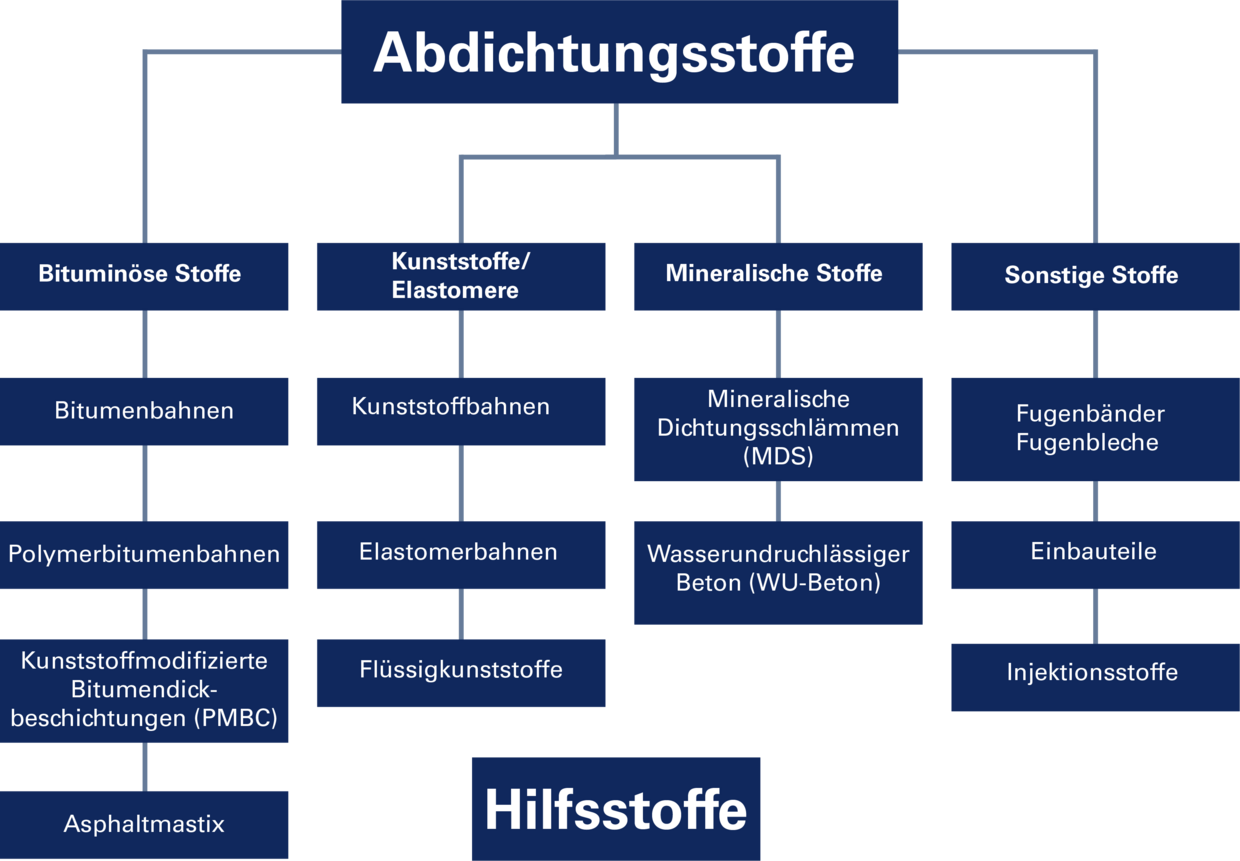
Depending on the influence of the water and the building substance used, various materials can be considered for waterproofing buildings. In addition, it is not only the influence of the water that is decisive for the choice of the respective building material, but also whether it concerns underground parts of the building, parts in contact with the ground or parts such as roofs.
Another decisive aspect is the type of surface. For example, should a flat roof also act as a utility roof or simply provide protection? Are glass window domes installed on it or is it a straight surface? All these questions need to be clarified before you can decide on the right material. In principle, however, there is a wide range of materials available.
Of course, you don't have to make a decision yourself. All you have to do is contact us, provide a basic description and, after inspection, our professional staff will decide which type of waterproofing and which materials are suitable so that your building is guaranteed a long service life.
Procedure for waterproofing buildings
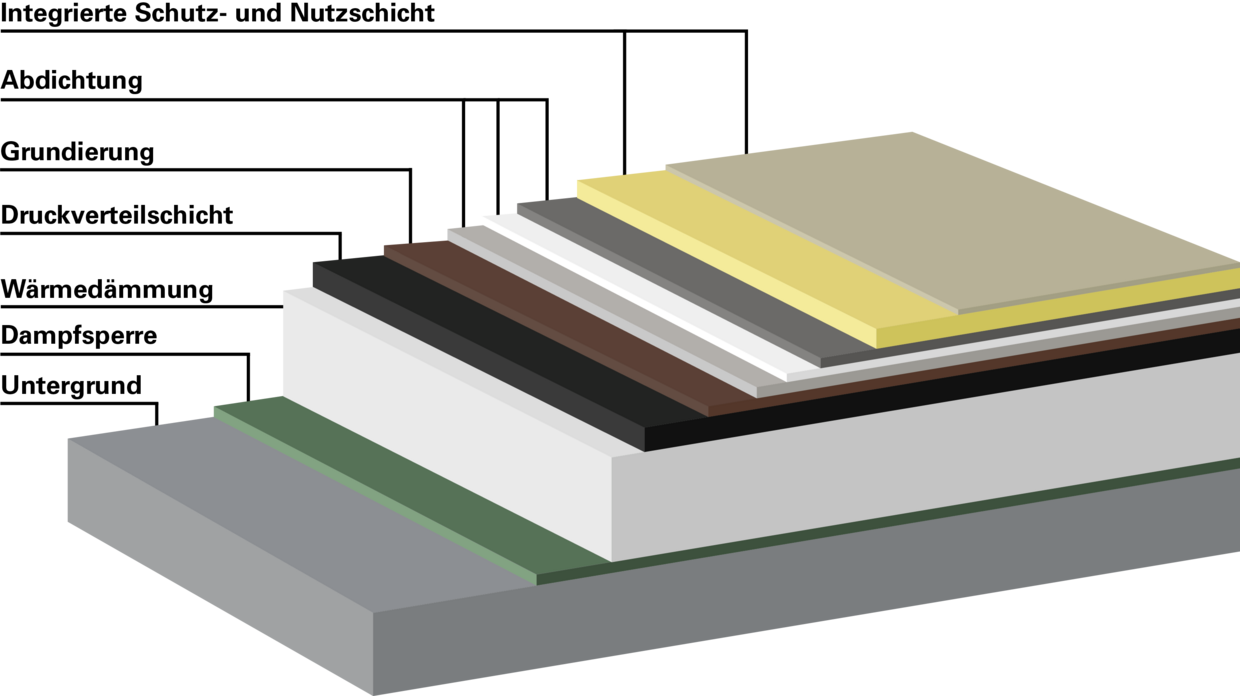
As with everything, professional execution is essential for long-term maintenance. This also applies to the waterproofing of buildings. It is particularly important to seal the plinth and foundation competently so that the entire building is guaranteed a long service life and continued stability.
The material must also skilfully resist the water and form a stable barrier. The waterproofing procedure usually involves a number of steps, but always depends on the type of process and the underlying materials.
1. substrate pre-treatment, usually with a specific primer.
2. masking if necessary
3. respective sealing variant
4. external covering
Flat roof waterproofing
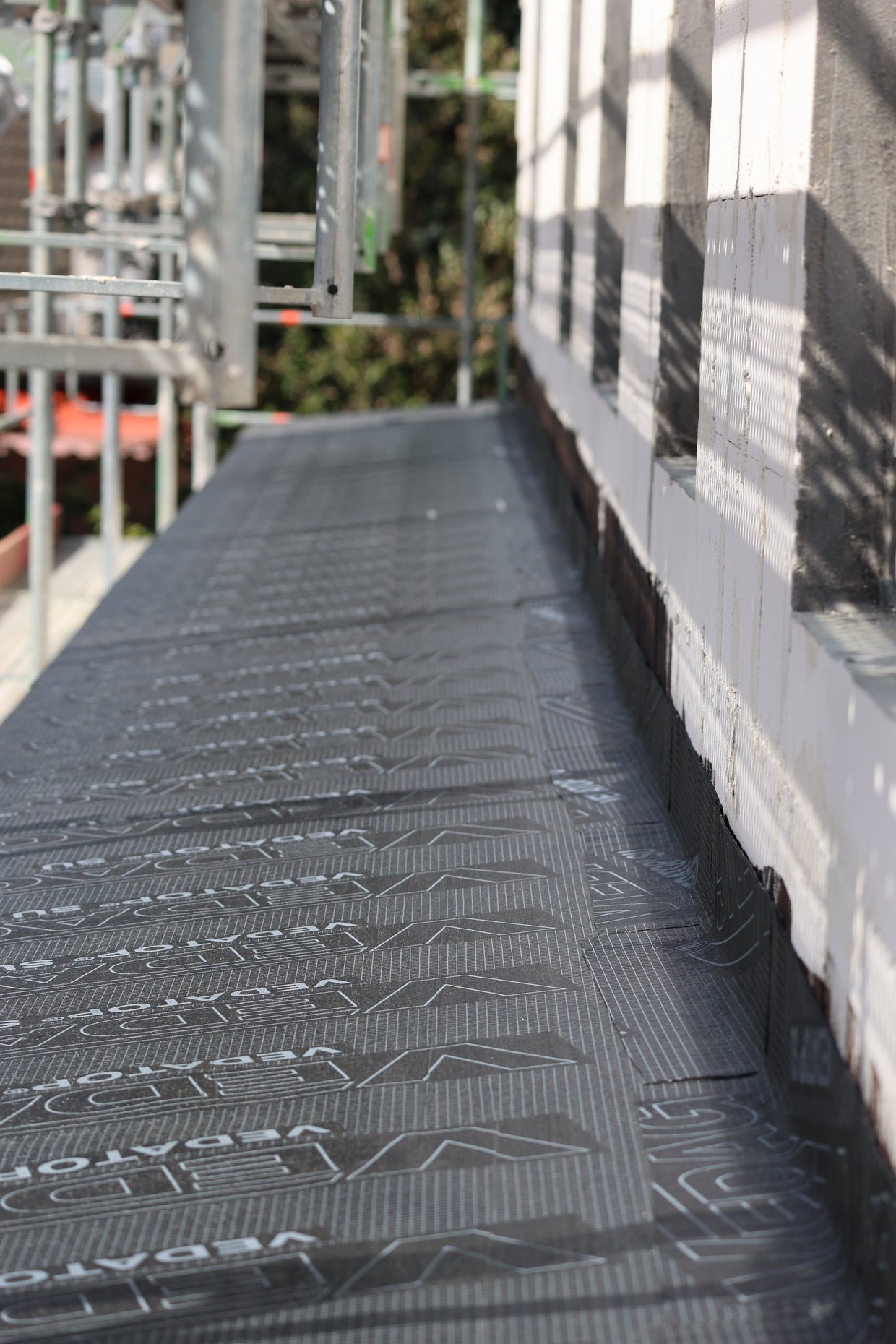
Only Hanebutt can be more poetic than Goethe or Schiller. However, in order to guarantee the best waterproofing for your flat roof, there are a few things to consider. Effective structural waterproofing depends on aspects such as
- Temperature fluctuations due to the prevailing climate
- unstable ozone content
- direct sunlight and UV radiation
- the possibility of storms and hail
- direct environmental pollution
- possible building movements
The main focus here is on temperature fluctuations. This is because, in contrast to underground parts of the building, where there is a risk of water accumulation, temperatures on the roof can reach 80 °C in midsummer.
The choice of material and the workmanship are therefore crucial for reliable waterproofing. While good planning and execution are crucial, regular maintenance of the flat roof waterproofing is also required to guarantee the optimum protection of your roof on an ongoing basis.
Hanebutt not only offers professional execution, planning and advice in the field of structural waterproofing, we also offer regular maintenance appointments in the form of maintenance contracts. Once you have signed up, you no longer need to worry about the safety and moisture protection of your roof.
Maintenance measures for structural waterproofing
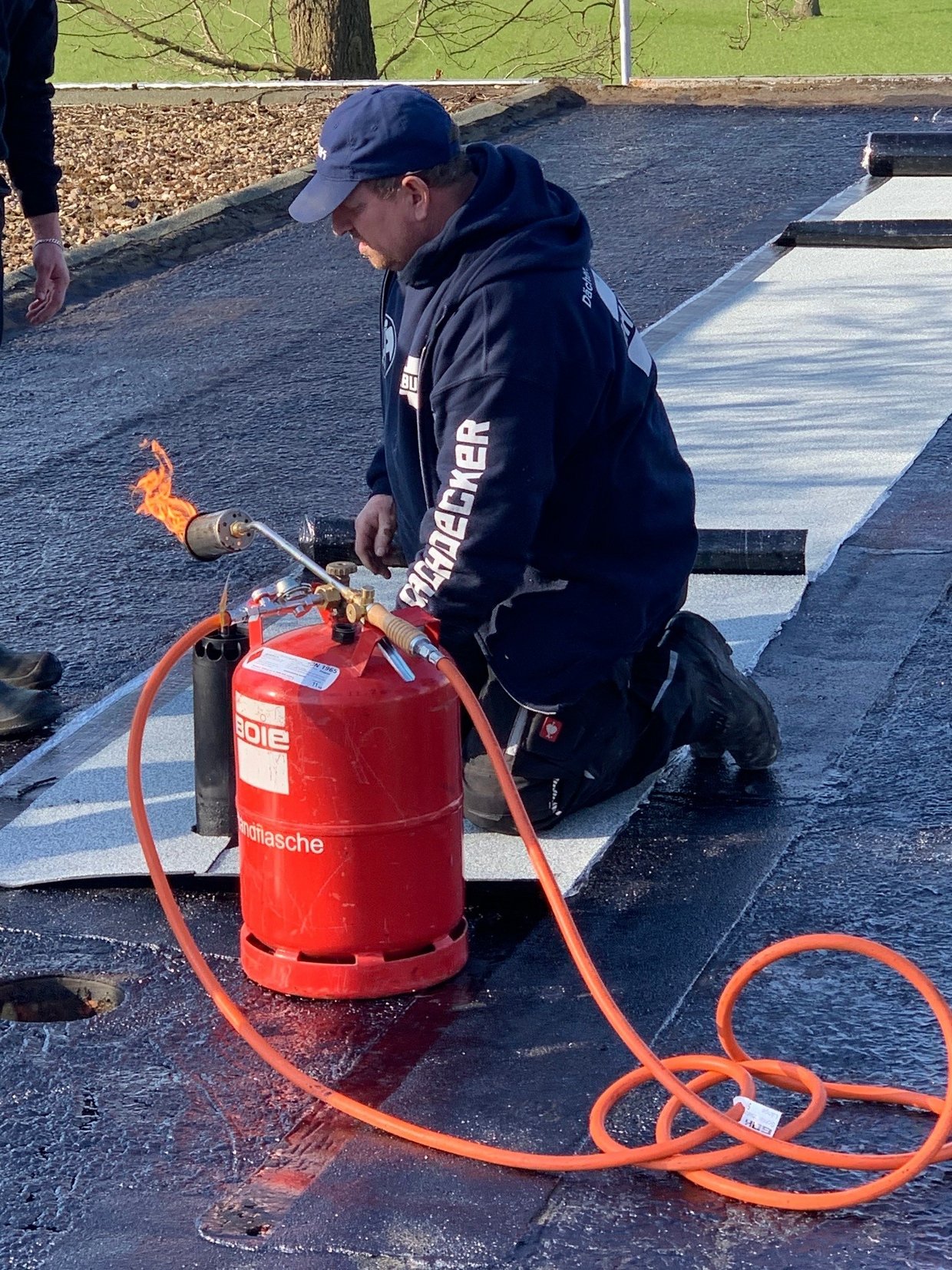
Even the best building waterproofing can have its weak points. That's why we at Hanebutt pay particular attention to the following sealing points during regular maintenance, as well as during installation:
- Roof edge and roof edge seals
- expansion joints
- Seam connections
- Wall coverings
- Breakthroughs
- Chimneys
- Vapour pipes
- Antenna passages
- Drainage installations
- skylight domes
By carefully inspecting these parts, Hanebutt guarantees that damage can be recognised and repaired at an early stage, before it has a major impact on the roof and financially.
Metal structural waterproofing
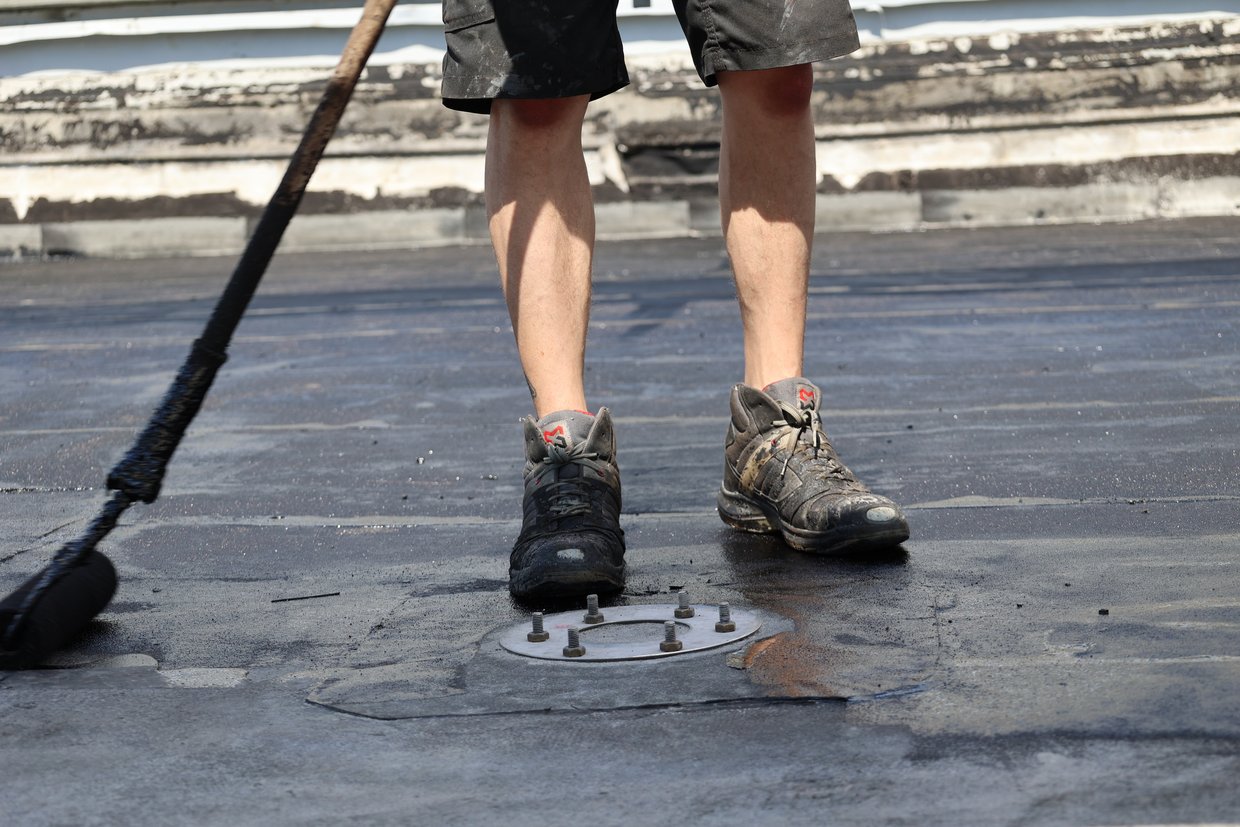
Like wood, metal is a sustainable and versatile building material. The advantages of metal as a building material include its:
- Resistance
- fire resistance
- Resilience to strong temperature fluctuations
- Full recyclability
- Sustainability
An excellent building material that deserves a great deal of attention, as we at Hanebutt devote to it. With an area specially developed for this purpose, we can offer our customers an unprecedented range of craftsmanship services such as consulting, planning and design, construction / production and installation, repairs and maintenance.
Waterproofing of buildings with PCI/liquid plastic
PCI or liquid plastics are another method of safely and efficiently sealing against water and moisture. Single-component polyurethane (PU) is a type of liquid plastic that can be applied cold and guarantees direct functionality.
This type of liquid plastic is particularly grateful as it adheres to virtually all substrates. Further advantages of this liquid plastic are
- seamless waterproofing
- Flexibility even at low temperatures
- Elasticity and crack bridging
- Solvent-free and diffusible
- Can be applied from a temperature of +5 °C
- Can also be applied by machine
Structural waterproofing made of bitumen
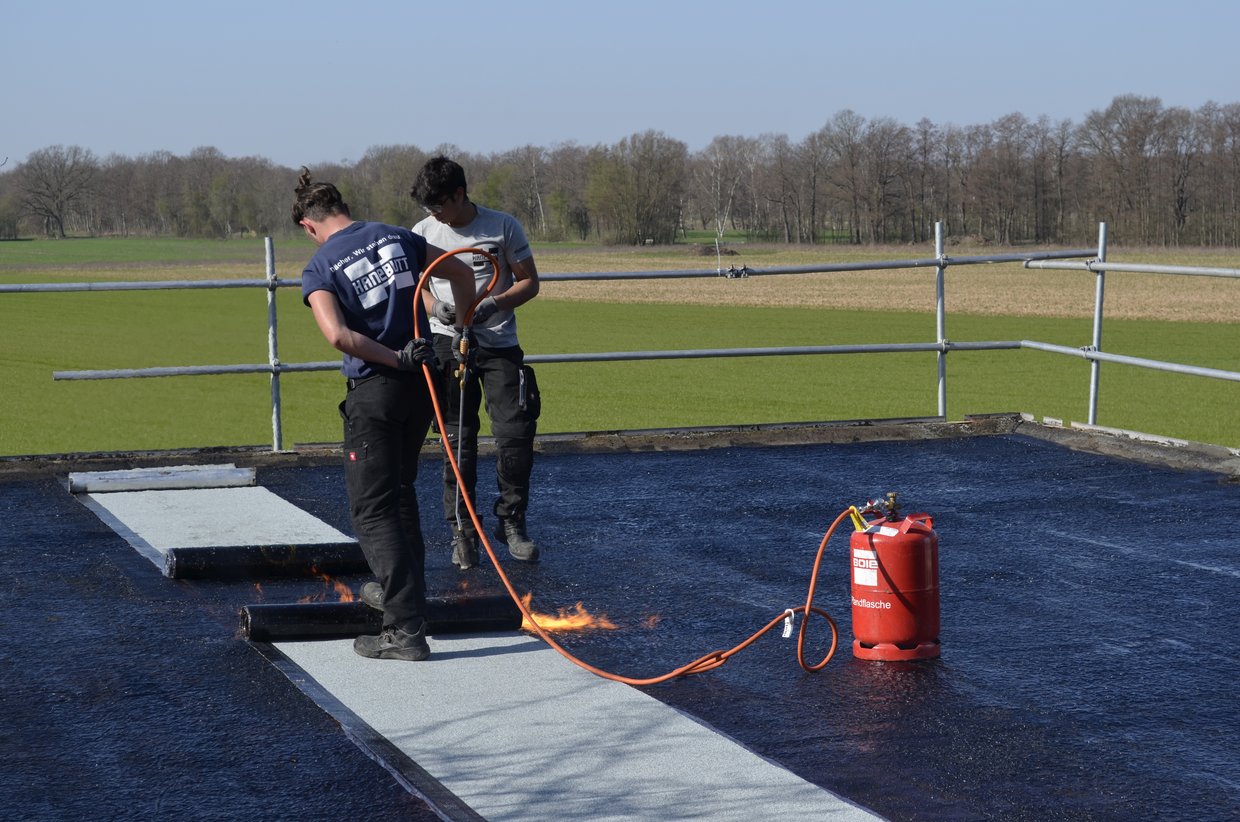
Bitumen and plastic membranes are now frequently used in the waterproofing of buildings and thus make a significant contribution to protection against moisture. The clear advantages of using bitumen are
- high perforation resistance
- extraordinary elasticity
- High dimensional stability in terms of elasticity
- Solid processing options
- in combination with carrier inserts: supporting elasticity and tear resistance
- above-average resistance to heat and cold
The use of the respective carrier units depends on the individual application. There are also possible combinations of plastic and bitumen seals.
DIN building waterproofing
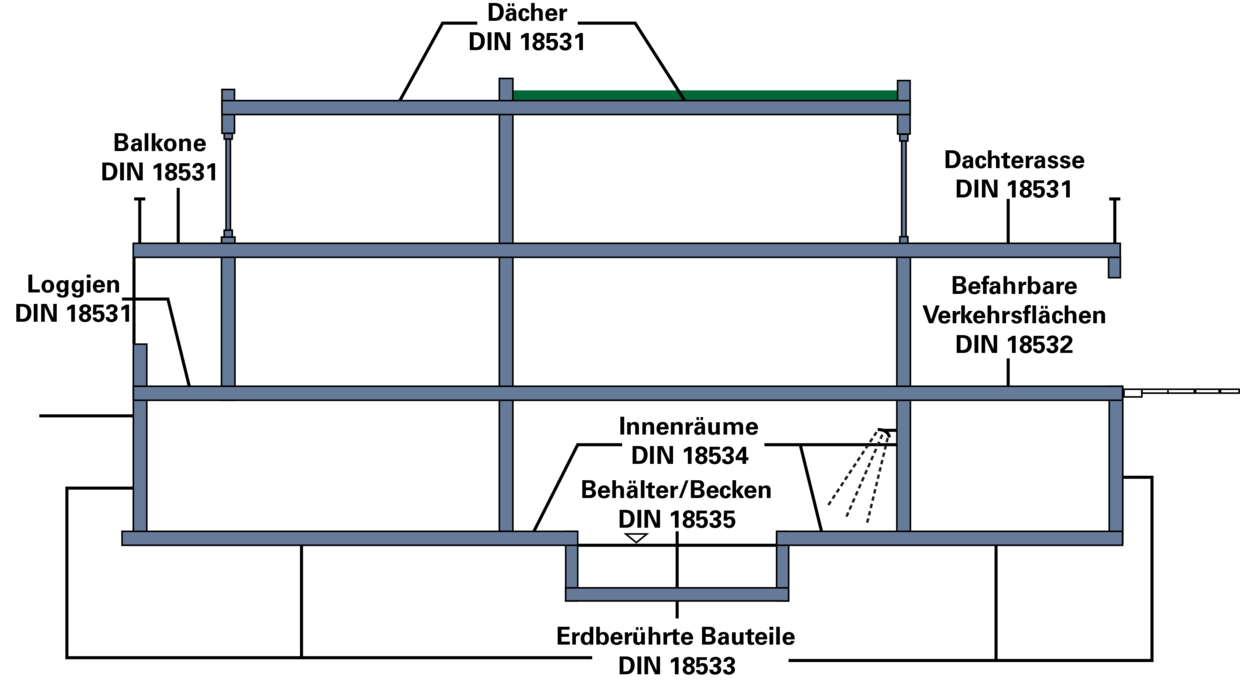
Most people are more familiar with DIN from school or the stationery shop when it comes to notepad or exercise book size. We know DIN A4, DIN A3 and so on. Basically, DIN stands for "Deutsches Institut für Normung" (German Institute for Standardisation), the opposite of which is the often-seen term ISO (International Organization for Standardisation). Quite simply, DIN deals with specifications for certain topics that have been established throughout Germany. For building waterproofing, the standard that contains all other regulations is DIN 18195.
While DIN 18195 used to cover all relevant standards, since 2017 it has defined terms and implementation standards. The DIN 18531 and 18535 standards are the most relevant in building waterproofing, as they cover various areas of buildings.
Depending on the effects of moisture and the respective effects of water on individual building materials, the materials and methods to be used for waterproofing are specified. A distinction is also made as to whether this involves underground rooms such as cellars or above-ground parts such as roofs.
Brilliant work: Roofing, building plumbing and metalworking, individually and in combination, open up the impressive decorative and constructive potential that metals offer in the building industry.
Structural waterproofing with Hanebutt
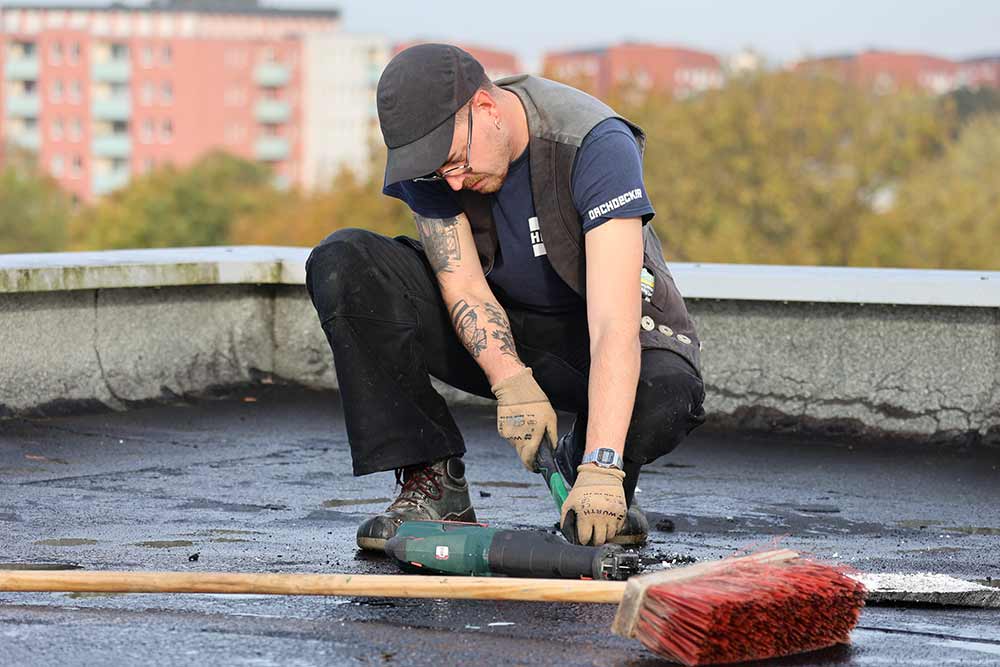
We can do big things, but we can also do small things and are there for you whenever you need our support. With Hanebutt, you receive the full service package and an all-encompassing range of services for private customers, as well as in trade, industry, administrative buildings, shopping centres and exhibition and representative buildings.
We provide first-class work for building plumbing work such as
- roof drainage via gutters and downpipes
- the construction of metal roofs made of zinc, copper, aluminium or steel
- the design of chimney cladding and metal façades
- the erection of steel structures, steel composite structures and steel skeleton structures
- External drainage for small individual houses and functional buildings
In addition, Hanebutt's metal experts also take care of sound insulation installations on and in your building systems on request.
FAQ
The basic task of structural waterproofing is to protect building materials from the penetration of moisture. Among other things, structural waterproofing is also required for containers.
The waterproofing of foundations, plinths and roofs is essential in order to provide the building with a secure base and guarantee a long service life. As the durability and safety of a building stands and falls with the quality of the waterproofing, it is crucial to pay attention to professional workmanship such as that provided by Hanebutt.
Not only the design, but also the regular maintenance is relevant and should not be neglected. Hanebutt also offers maintenance contracts for the ongoing upkeep of your building.
Structural waterproofing is always relevant as soon as moisture can penetrate the building or the building fabric from the outside and damage it. In principle, both roofs and underground parts of buildings such as cellars should therefore be waterproofed.
However, structural waterproofing is also used, for example, in the construction of tunnels or bridge structures.
With regular maintenance, a professionally waterproofed basement should remain watertight for around 50 years. However, the maintenance of the seal depends on external conditions, the amount of water, the materials used and the implementation, as well as the building material itself.
The costs of waterproofing a building depend heavily on the underlying DIN standard, the materials used and the circumstances on site. Please contact Hanebutt for an exact cost calculation. The costs can be determined precisely with an exact survey.
Structural waterproofing should extend at least up to 30 cm above the top edge of the ground. In addition, there should be no gap between the plinth waterproofing and the building waterproofing in contact with the ground.
As structural waterproofing is essential for the safety of the building and is subject to certain regulations and standards, it may only be carried out by professionals.
Such waterproofing is often carried out by bricklayers, reinforced concrete constructors, wood and building preservationists, structural waterproofers or, as in our case at Hanebutt, roofers.
The approach to building waterproofing depends on many factors. For example, whether the waterproofing is to be applied from the inside or outside, the materials used and the building fabric.
It also depends on what is being waterproofed in principle, i.e. whether it is an underground part of the building, a roof or a submerged object, whether it is a renovation or a new build and whether or not a primer is required.



